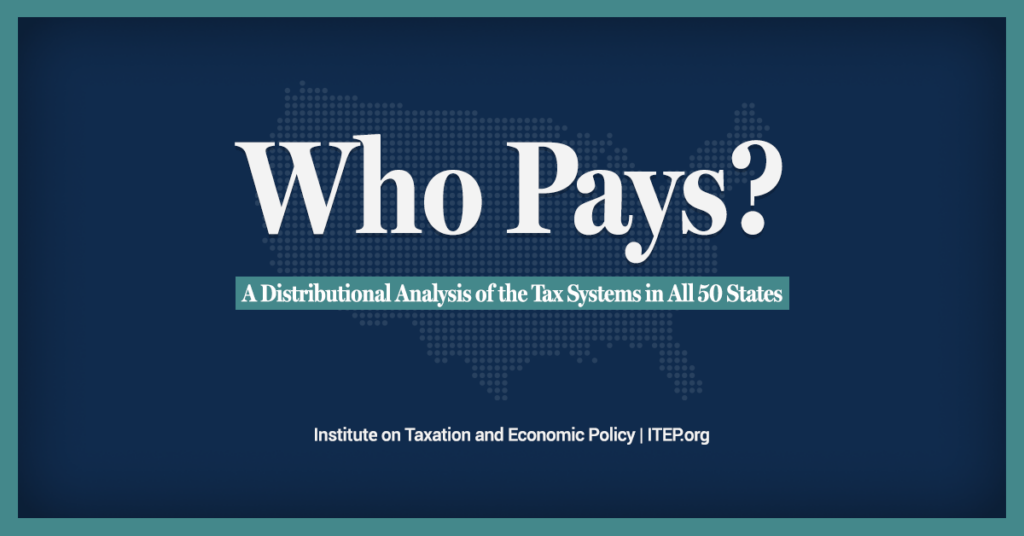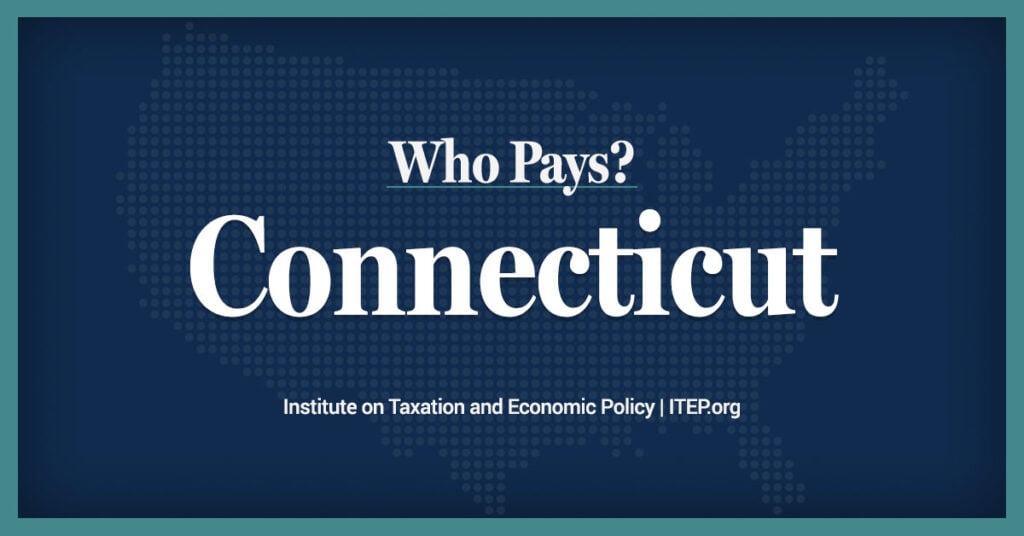Below is written testimony delivered by ITEP Senior Policy Analyst Marco Guzman before the Connecticut General Assembly Finance, Revenue, and Bonding Committee on March 11, 2024.
Good afternoon, Senator Fonfara, Representative Horn, and members of the Committee, and thank you for this opportunity to testify. My name is Marco Guzman and I’m a senior policy analyst with the Institute on Taxation and Economic Policy, or ITEP, and we’re a nonprofit research organization that focuses on state, local, and federal tax policy issues.
Today, on behalf of ITEP, I am testifying in support of the following bills:
- SB35 An Act Establishing A Capital Gains Surcharge;
- SB36 An Act Establishing A Refundable Child Tax Credit; and
- HB5113 An Act Increasing the Highest Marginal Rate of the Personal Income Tax and Establishing a Capital Gains Surcharge to Provide Funding for Certain Child-Related, Municipal, and Higher Education Initiatives,
According to our in-depth Who Pays? report, which is the only distributional analysis of its kind of tax systems in all 50 states and Washington, D.C., Connecticut’s tax structure is regressive , meaning that total state and local taxes take up a greater share of income from low- and middle-income families than from wealthy families. For those in the bottom 20 percent of earners, state and local taxes make up 12.4 percent of their household income, while that share is only 7.9 percent for those in the top 1 percent. This goes against basic principles of tax fairness and Connecticut’s tax system falls short of what most people consider to be a fair tax code. However, the bills being discussed today would each move Connecticut’s tax system closer to that goal.
For instance, a modest capital gains surcharge would ensure that those with some of the lowest effective tax rates, but greatest ability to pay taxes, pay their fair share. Of the capital gains income reported on federal returns, the wealthiest 0.1 percent of Americans—a group that is predominantly white—received 54 percent of all capital gains income, whereas the poorest three-fourths of the population received less than 6 percent.
Additionally, approximately 8.1 percent of Black households and 7.3 percent of Hispanic households own stocks or mutual fund shares outside of a retirement savings account. Among non-Hispanic white households, by contrast, the comparable figure is 27.9 percent. Even among asset owners, the gaps in the asset value are staggering. The median white household owning stocks or mutual fund shares owns $45,100 in such assets compared to just $20,000 for Hispanic households and $8,500 for Black households.
Generations of policy advantage and privilege have allowed white families to build far more wealth than families of color. As a result, income generated from wealth, such as capital gains, disproportionately flows to white families. When comparing a Black family and a white family that each earns $100,000, the white family will, on average, derive more of its income from these tax-advantaged sources and the Black family will pay more tax as a result.
A state-level capital gains surcharge would help counteract both the growing racial wealth gap and the preferential treatment of capital gains at the federal level through loopholes like “deferral” and “stepped-up basis.”
Similarly, raising top marginal income tax rates on those earning millions of dollars would add additional progressivity to the overall tax state system, and allow that revenue to be reinvested in the state. For example, in Massachusetts, voters approved an initiative known as the Fair Share Amendment, which implemented a 4 percent surtax on earnings over $1 million. The tax is already bringing in more revenue than expected and lawmakers have announced that the new revenue will be paying for it things like free school meals for K-12 public school kids, tuition-free community college for eligible students, and of course, increased funding for transit and other infrastructure projects.
Finally, a child tax credit, particularly when structured as a refundable credit, can provide qualifying families with a much-needed boost to their after-tax incomes and help offset some of the persistently high costs of raising children. These credits are proven and effective and are being adopted across the country at a rapid pace. Therefore, it’s no surprise that they are associated with reduced poverty, higher financial and household stability, improved child and maternal health, and better educational achievements and future economic outcomes.
Moreover, there is strong evidence that when families receive this aid, they spend it on everyday necessities. When the federal child tax credit was expanded in 2021, not only did it cut child poverty by 46 percent, but it was also found that low- and middle-income households overwhelmingly spent the increased credit on housing, food, and clothing. It would be a wise choice for Connecticut to again make this commitment to invest in families of the Constitution State and join the growing list of states that offer child tax credits, including neighboring states (Maine, Vermont, New York, New Jersey, and Massachusetts) that provide refundable child tax credits.
Connecticut’s regressive tax system calls for policies to move the needle at both the top and bottom of the income scale. States like New Mexico, Massachusetts, and others have vastly improved their tax systems over the years by implementing or expanding refundable credits and more robustly taxing top earners. Connecticut is currently in a position to do the same this legislative session.
The bills discussed today will help achieve that goal, while boosting the economic security of families struggling to get by, raising progressive revenue, and promoting greater tax and racial equity overall.





